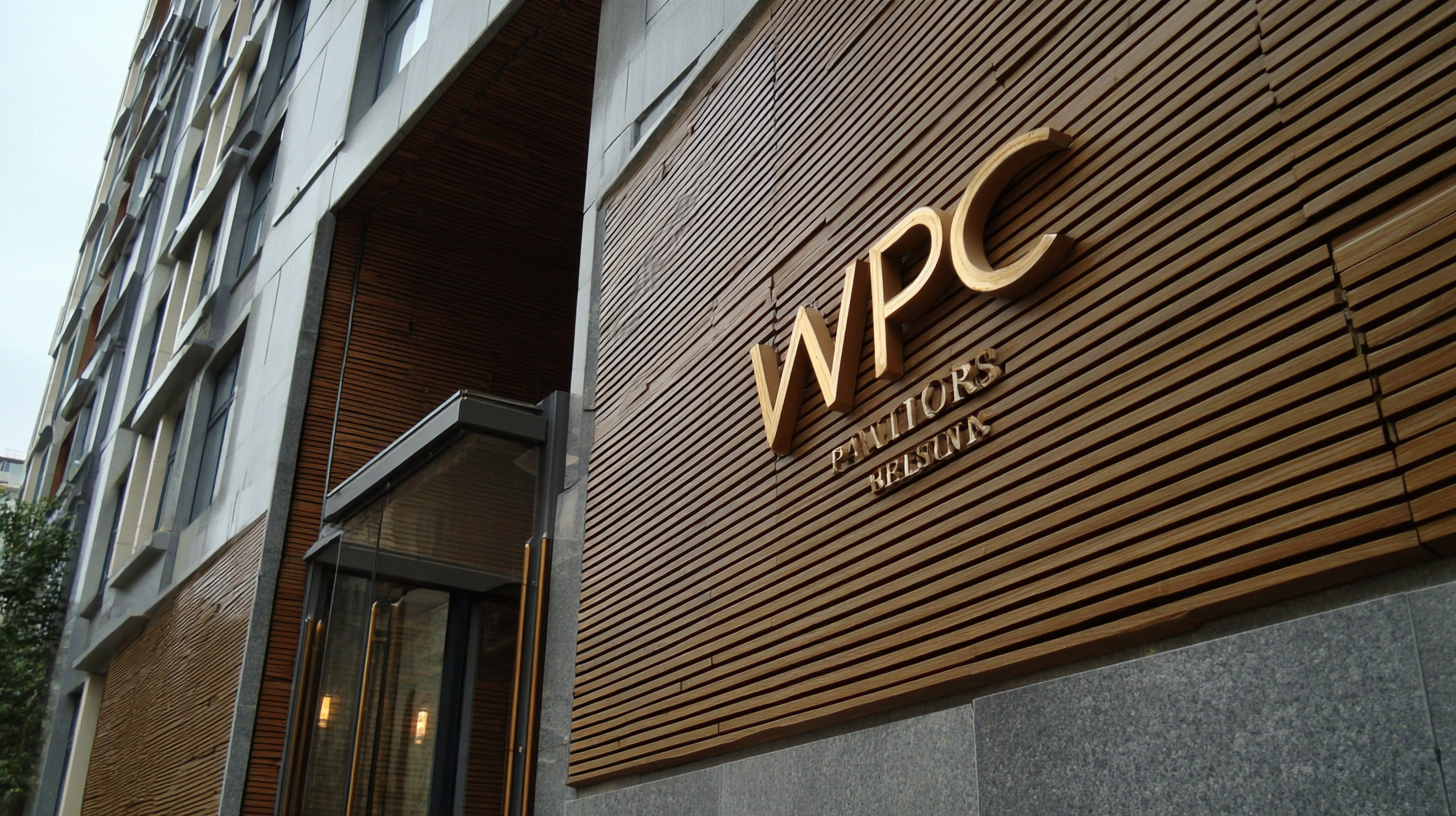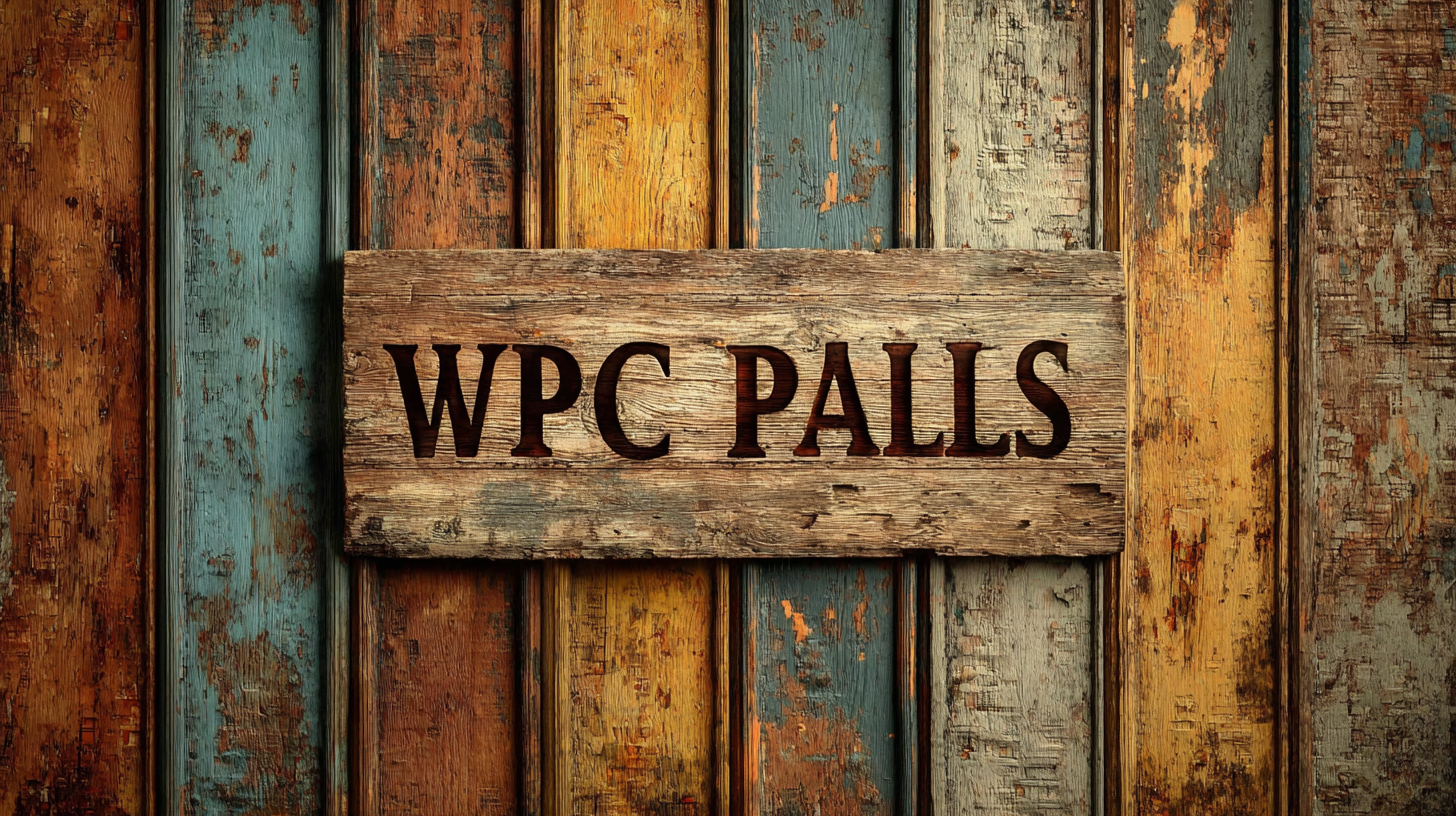
Unlocking the 7 Secret Benefits of Best WPC Wall Panels for Your Projects
When embarking on a construction or renovation project, selecting the right materials can significantly impact both functionality and aesthetics. One such material that has gained immense popularity in recent years is WPC Wall Panels, known for their durability, versatility, and eco-friendly properties. However, the key to truly harnessing the benefits of WPC Wall Panels lies in finding a quality supplier who understands the unique attributes of these materials.

In this blog, we will explore the seven secret benefits of WPC Wall Panels that can enhance your projects, while also providing valuable insights on how to identify and select the best suppliers in the market. Whether you are a seasoned contractor or a DIY enthusiast, understanding these critical factors will ensure you make informed decisions, leading to successful project outcomes. Get ready to unlock the potential of WPC Wall Panels and elevate your designs to new heights.
The Rise of WPC Wall Panels: A Game Changer in Modern Construction
The rise of WPC (Wood Plastic Composite) wall panels is transforming modern construction, as evidenced by the projected growth of the smart building market, expected to reach $20.69 billion by 2032. This surge is fueled by the increasing demand for efficient building management systems (BMS), HVAC solutions, and advanced lighting controls. WPC wall panels emerge as a game changer in this ecosystem, providing a sustainable and versatile option that meets the evolving architectural and environmental standards of contemporary building projects.
Moreover, the global construction industry faces challenges, such as rising engineering costs and market downturns, particularly highlighted by the current climate affecting the South Korean building sector. Key players in the market are keen to adopt innovative materials like WPC to mitigate these pressures. The emphasis on durability and low maintenance of WPC products aligns perfectly with the industry's shift towards automated systems and smart technology integration, reinforcing their relevance in achieving cost-effective, high-performance structures that cater to modern demands. As WPC wall panels gain traction, they not only enhance aesthetic appeal but also contribute significantly to the sustainability goals that the construction industry increasingly prioritizes.
Unlocking the 7 Secret Benefits of Best WPC Wall Panels
This chart illustrates the key benefits of using WPC wall panels in modern construction projects. Each benefit is reflected in a percentage of preference among industry professionals.
Exploring the Eco-Friendly Advantages of WPC Materials
Wood Plastic Composite (WPC) wall panels are rapidly gaining traction in sustainable construction due to their eco-friendly attributes. According to a report by the American Institute of Architects (AIA), WPC materials utilize recycled wood fiber and plastic, helping to reduce waste by up to 40% compared to traditional building materials. By incorporating these panels into building projects, architects and contractors can play a crucial role in promoting sustainability and reducing the overall carbon footprint of their developments.
Additionally, WPC panels require significantly less energy to produce, which contributes further to their eco-friendliness. The Global Warming Potential (GWP) of WPC is substantially lower than that of conventional wood products, with some studies indicating a reduction of greenhouse gas emissions by approximately 30%. This attribute, combined with their durability and resistance to decay, makes WPC an ideal choice for environmentally conscious builders looking to enhance the sustainability of their projects while maintaining aesthetic appeal. The benefits of WPC extend beyond sustainability; they offer a practical solution that aligns with the increasing demand for green building practices in the construction industry.

Durability and Aesthetic Appeal: Why WPC Wall Panels Stand Out
When it comes to modern construction and design, durability and aesthetic appeal are paramount. WPC (Wood Plastic Composite) wall panels have emerged as a preferred choice, combining the natural beauty of wood with the rugged strength of plastic. According to a 2021 industry report by MarketsandMarkets, the WPC market is projected to reach $7.5 billion by 2026, highlighting the growing recognition of these materials in residential and commercial projects. WPC wall panels offer impressive resistance to moisture, UV rays, and pests, making them a resilient alternative to traditional wooden panels.
One of the standout features of WPC wall panels is their versatility, allowing for a range of finishes and designs. This adaptability not only enhances the aesthetic element of any project but also ensures that the materials can complement various architectural styles. According to a study by Research and Markets, the aesthetic appeal of WPC has played a crucial role in its market growth, as approximately 60% of consumers prioritize design in their purchasing decisions.
Tip: When selecting WPC wall panels, look for products with a high-quality finish to ensure longevity and maintain an appealing look over time. Additionally, checking for certifications like ASTM and ISO can provide assurance of the product's durability against environmental stresses.
Cost Efficiency: How WPC Wall Panels Save You Money in the Long Run
WPC (Wood-Plastic Composite) wall panels are rapidly gaining traction in the construction industry not only for their aesthetic appeal but also for their impressive cost efficiency. According to a report by Research and Markets, the global wood-plastic composite market is projected to reach $8.5 billion by 2027, growing at a CAGR of 10.5%. This rapid growth underscores the rising demand for sustainable and cost-effective building materials. WPC wall panels, made from a combination of reclaimed wood fibers and recycled plastic, offer a unique solution that reduces overall project costs without compromising quality.
In terms of long-term savings, WPC wall panels require significantly less maintenance compared to traditional materials. A study published by the National Association of Home Builders (NAHB) indicates that homeowners can save up to 30% on maintenance costs by opting for WPC materials. Additionally, their durability leads to a longer lifespan—WPC wall panels can last 25 years or more, reducing the frequency and cost of replacements. Furthermore, energy-efficient installation practices associated with WPC panels can cut upfront labor costs by as much as 40%, providing not only immediate savings but also sustained economic benefits throughout the lifespan of the project.
Global Trends: The Growing Popularity of WPC Wall Panels Across Markets
The global construction industry is witnessing a remarkable shift towards the adoption of Wood-Plastic Composite (WPC) wall panels. According to a recent report by MarketsandMarkets, the WPC market is projected to grow from USD 5.7 billion in 2022 to USD 8.5 billion by 2027, reflecting an annual growth rate of 8.1%. This surge can be attributed to an increasing demand for sustainable building materials that offer durability and aesthetic appeal. As environmental concerns become a priority for both consumers and builders, WPC wall panels, which combine wood and plastic fibers, present a viable alternative to traditional materials.
Moreover, the versatility of WPC wall panels is appealing to various sectors, from residential to commercial projects. The latest data from Grand View Research indicates that the residential segment alone accounted for over 55% of the total market share in 2022. WPC wall panels not only provide an attractive finish but also offer resistance to moisture, mold, and insects, thus enhancing their appeal in regions prone to humid climates. As industries increasingly embrace eco-friendly practices, the popularity of WPC wall panels is set to rise, transforming the landscape of modern architecture and interior design.

